Blue Waves and Black Ships in Shimoda
Shimoda is one of the most popular beach getaways from Tokyo with its white sandy beaches, surf spots and sea kayaking. But beneath its sleepy port town appearance, Shimoda is steeped in rich history dating back to the mid 1800s when Commodore Matthew Perry’s Black Ships arrived and opened Japan up to the West. It is here where the development of modern Japan began.
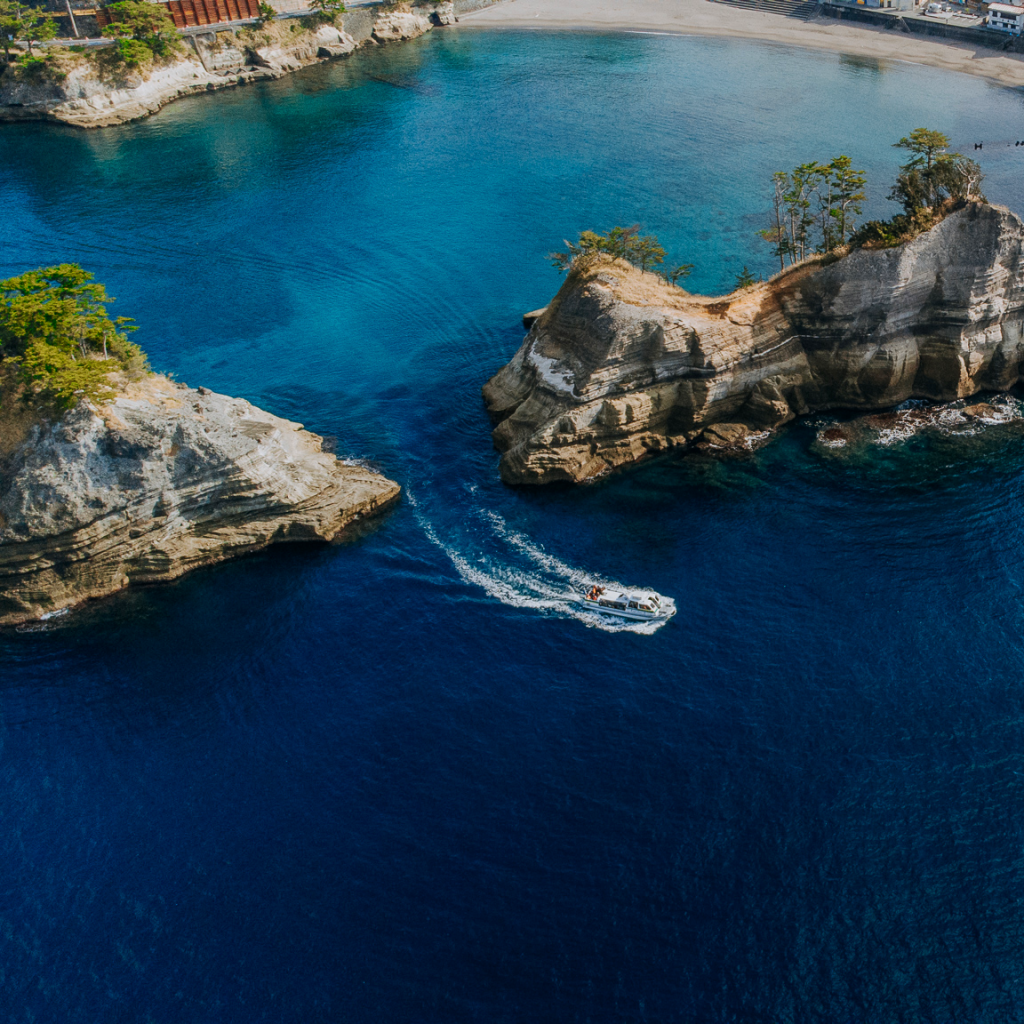
Exploring Historical Shimoda
Shimoda’s main port and town is pleasant to stroll about and can be explored in a day. Start at Ryosenji Temple; this is where the historic Harris Treaty was signed, which ended centuries of self-imposed isolation and opened Japan up to international trade.
“Commodore Perry is a famous household name, but it was actually U.S. diplomat Townsend Harris who stayed behind in Japan to learn about the local culture and work on relationships between Japan and the west,” says Daiei Matsui, chief priest at Ryosenji Temple. “Before that, foreigners were prohibited from communicating with Japanese people. But with the treaty, Shimoda became the first town where cross-cultural communication between Japanese and foreigners took place. We want to keep Shimoda as a place of open communication.”
Aside from serving as the chief priest, Matsui, who attended graduate school at the University of Hawaii, works on preserving and collecting historical artifacts related to the cultural exchange that happened in Shimoda long ago. He also provides English-guided tours around Ryosenji Temple and the adjacent Museum of the Black Ship. This museum displays artwork and artifacts related to Perry and his gunboats—nicknamed the “Black Ships”—for their color and steam engine smoke. Admission is ¥500.
Stroll down the path along Perry Road, a charming riverside road connecting Ryosenji Temple and a monument marking where Perry first landed. This road is dotted with traditional buildings which are now cafés, restaurants and boutique shops.
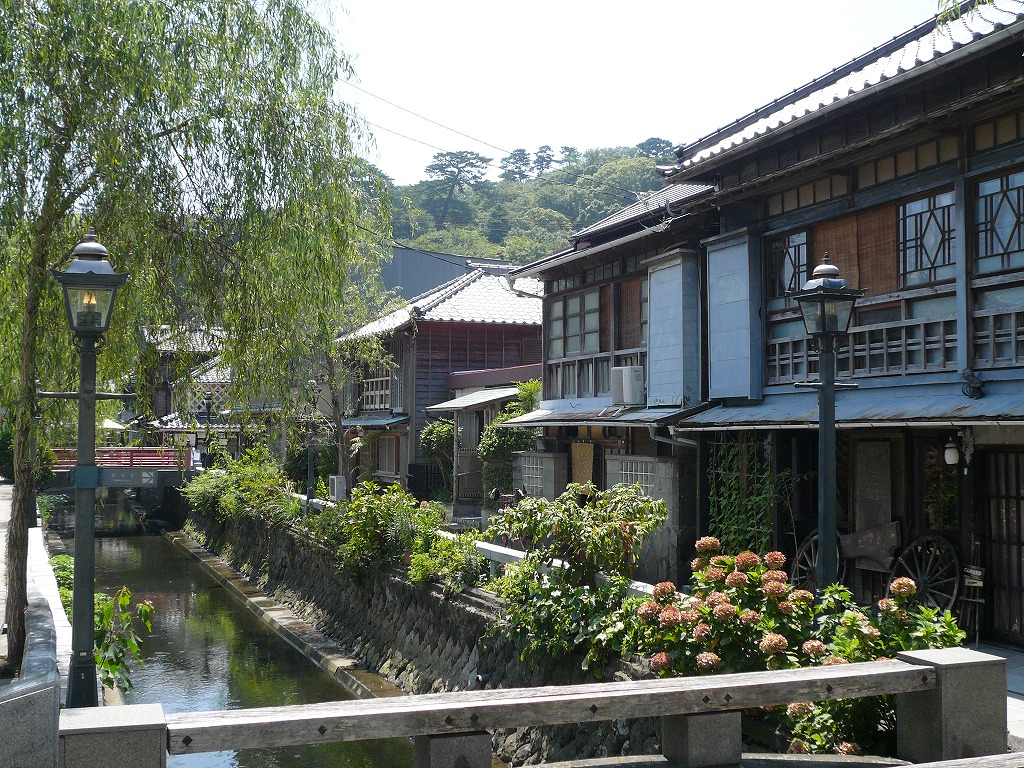
The nearby Shimoda History Museum is built in a traditional merchant building and houses more than 1,000 artifacts including early photographs, woodblock prints and Perry’s personal items. It also provides insight into what Japan looked like in the early 1800s.
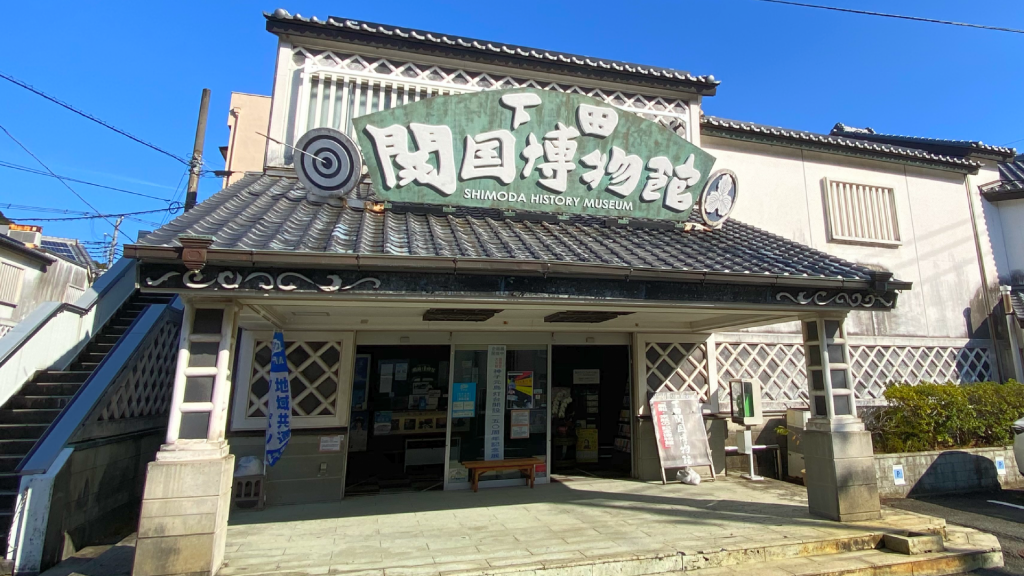
Experience riding Perry’s Black Ship for yourself on a 20-minute sightseeing cruise around Shimoda Harbor. The ship, Susquehanna, is designed as a replica Perry’s Black Ships. Admission is ¥1,250.
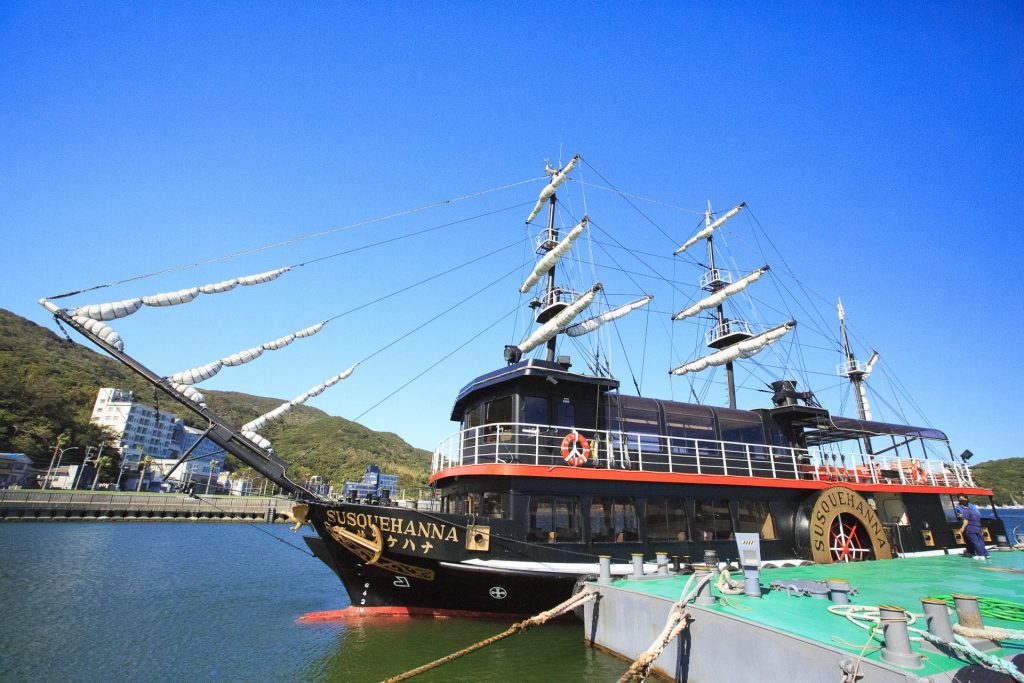
Back on shore, visit Roadside Station Kaikoku Shimoda Minato for lunch, local fish, vegetables and souvenirs. The second floor is dedicated to the Harbor Museum, which shows the development of Shimoda.
A 15-minute walk away is Gyokusenji Temple, a Buddhist temple that is more than 430 years old and served as the first American consulate in Japan. Townsend Harris lived here for two years and ten months. It was also where the Russo-Japan Treaty of Peace and Amity was signed. The adjacent Harris Memorial Hall houses Townsend Harris’ articles and other cultural artifacts. Admission fee is ¥500.
Surfing and Water Activities
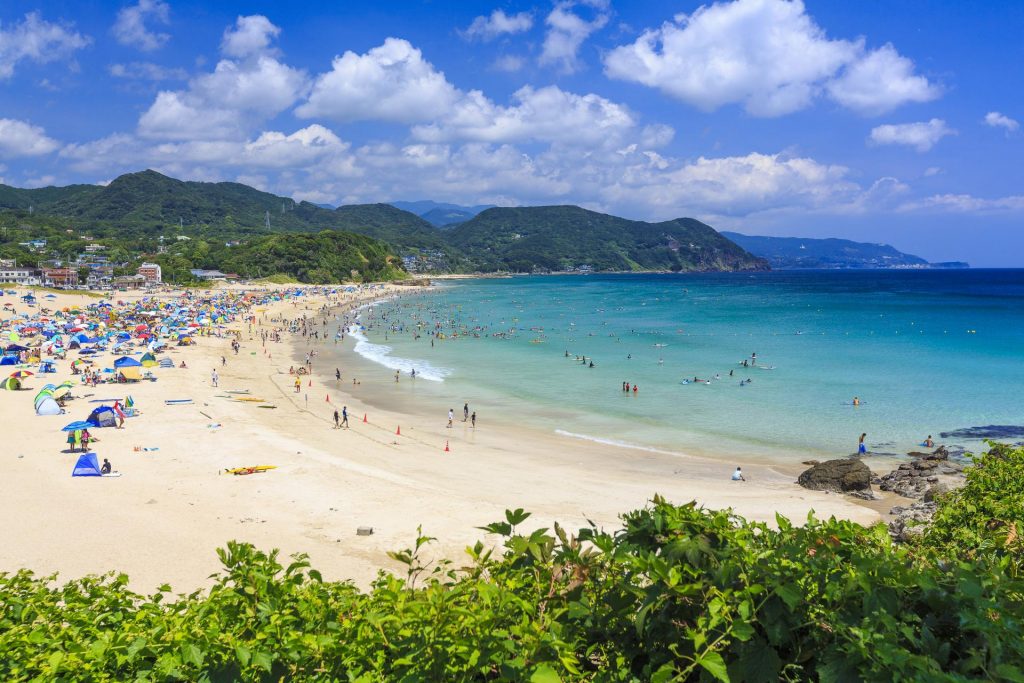
Shimoda has a selection of beaches catered to every type of beach-goer. While Shimoda’s town area is small, the beaches are spread out so it’s recommended to rent a car or cycle (note the coastal roads are hilly). Shirahama Ohama is the most photographed as its 700-meter white sandy beach makes it the largest beach in Shimoda. It has a famous torii gate on the left end of the beach and offers some stunning sunset views. Surfers flock here in summer to enjoy the big waves.
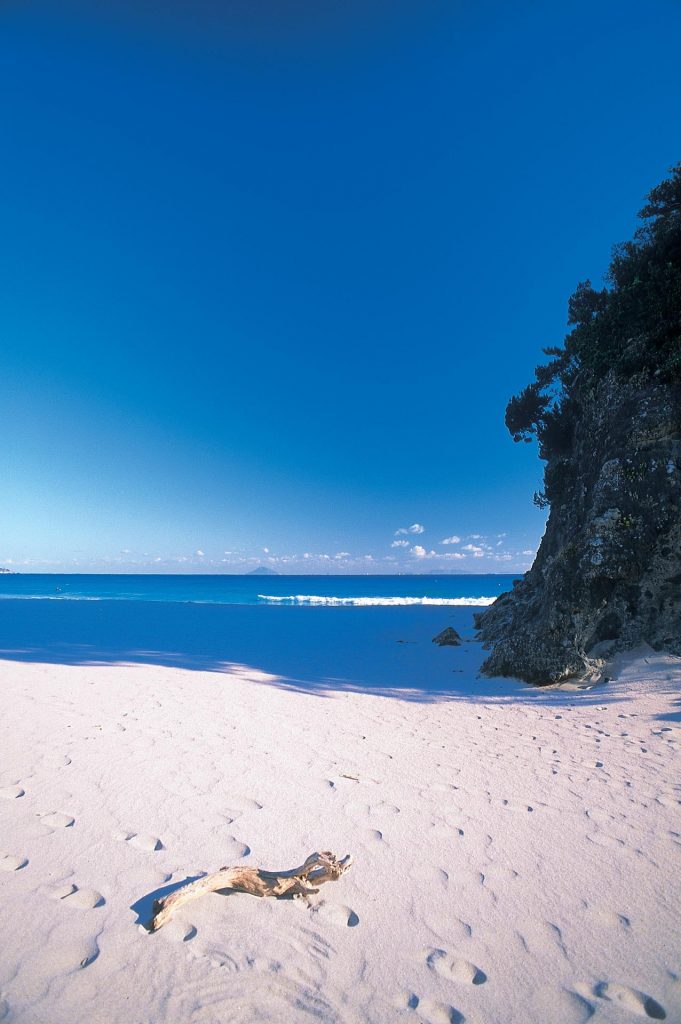
The second largest beach, Kisami Ohama, offers beginner-friendly waves as the water isn’t as rough as Shirahama and it is a mostly sandy beach. It is surrounded by mountains and the cliffs jutting out into the sea attract snorkelers.
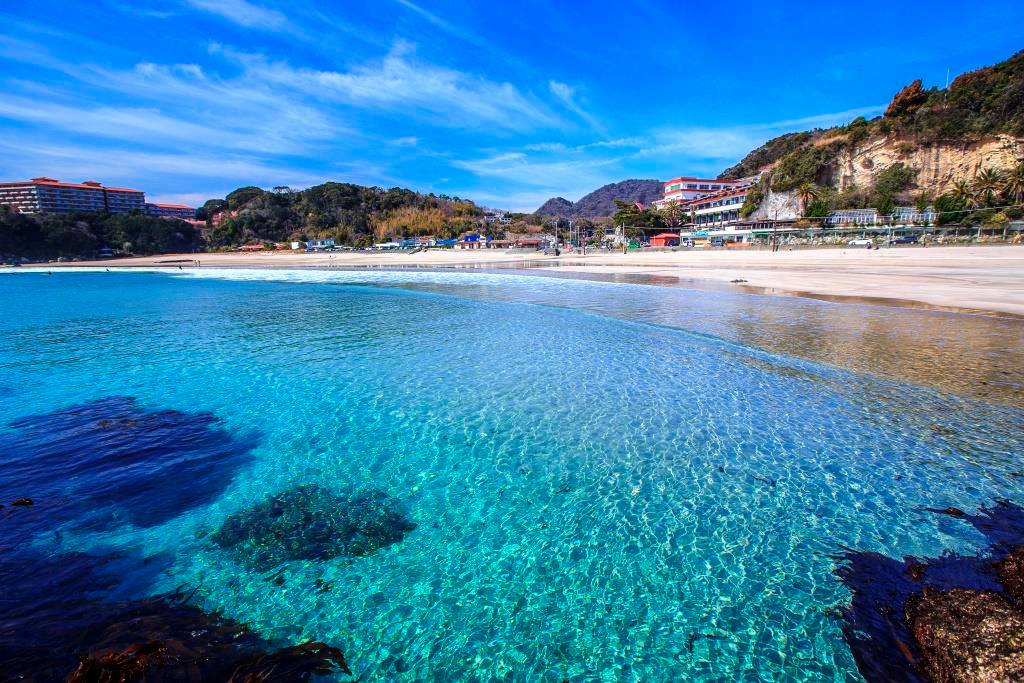
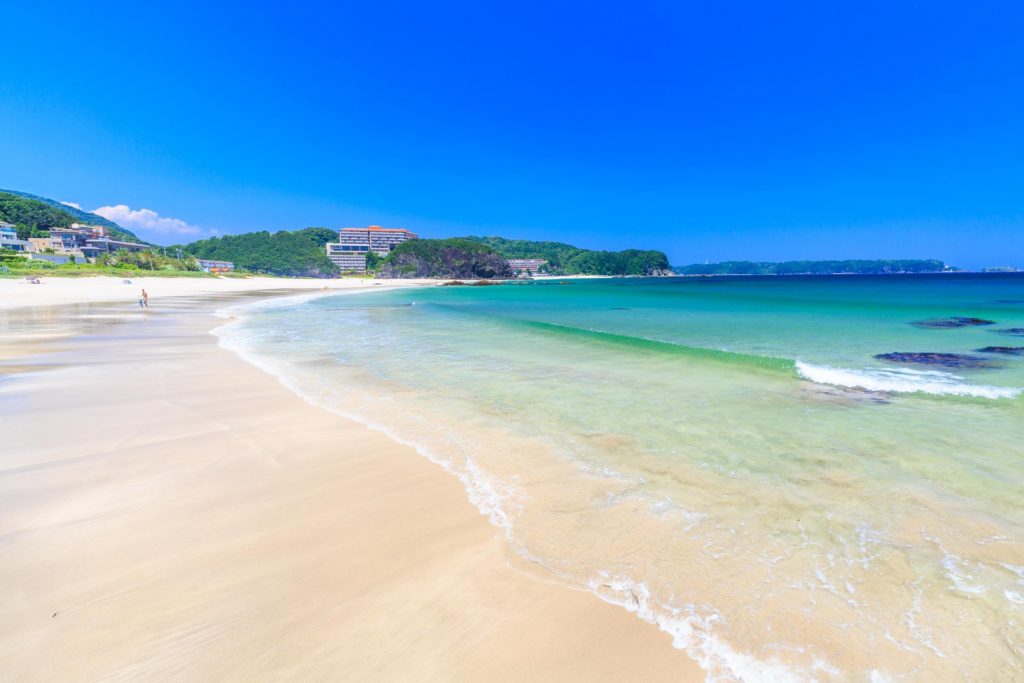
The milder Tatadohama and Iritahama are less crowded and good spots to learn surfing and bodyboarding. These beaches are famous for their clear and clean waters.
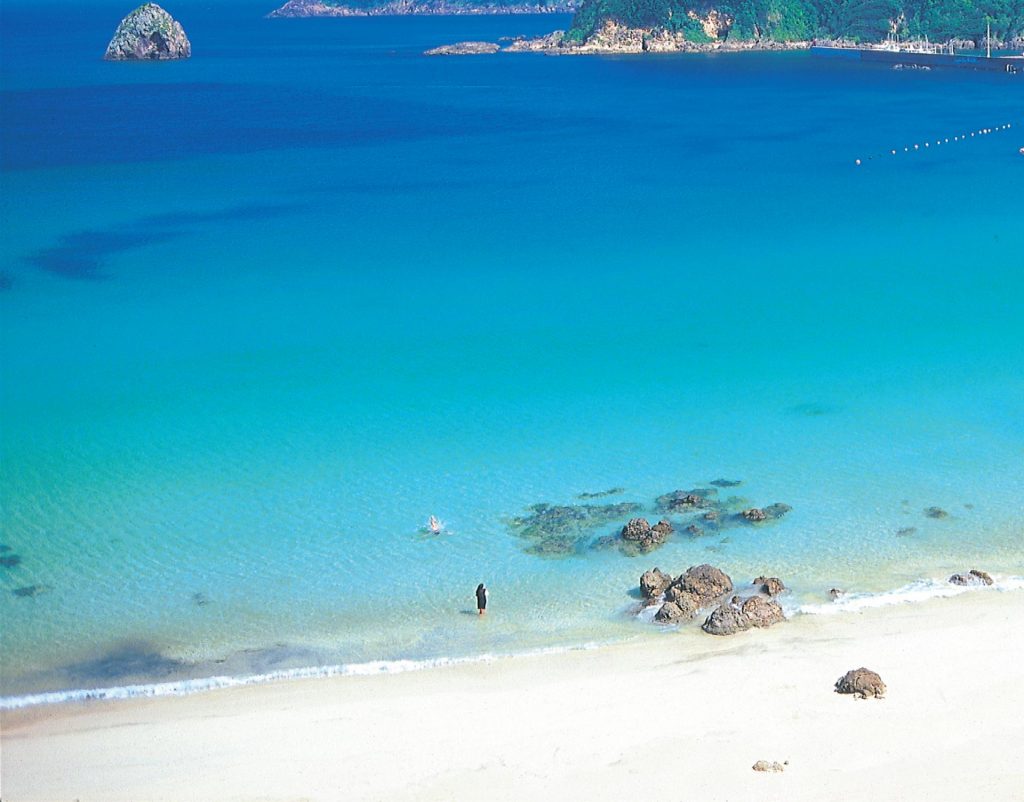
Sotoura is located in the bay and has no waves, but is good for swimming, easy sea kayaking and snorkeling.
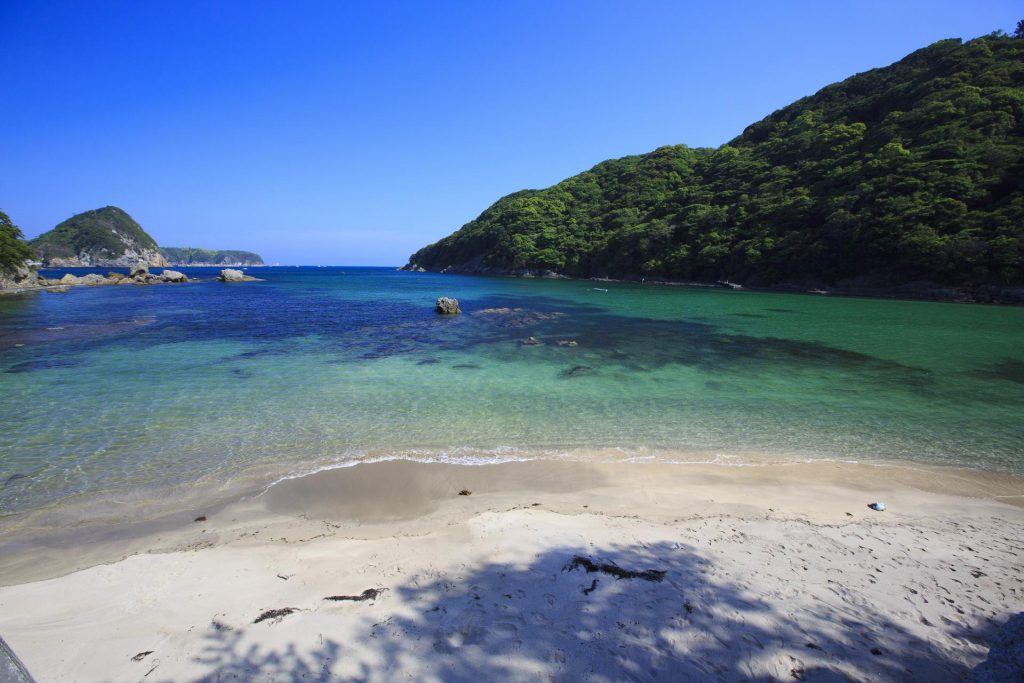
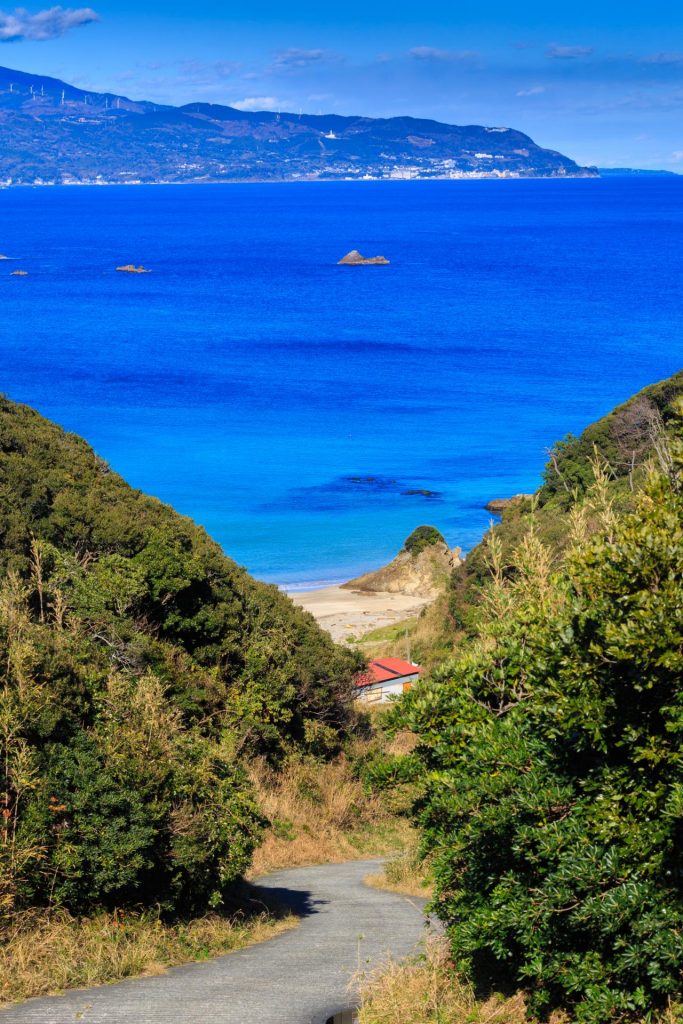
Kujuppama is a half-sandy, half-rocky beach. It’s a great place for rock fishing and light coastal hiking. The emerald green waters of Nabeta are close to town. Be sure to wear proper footwear as it has a rocky shore.
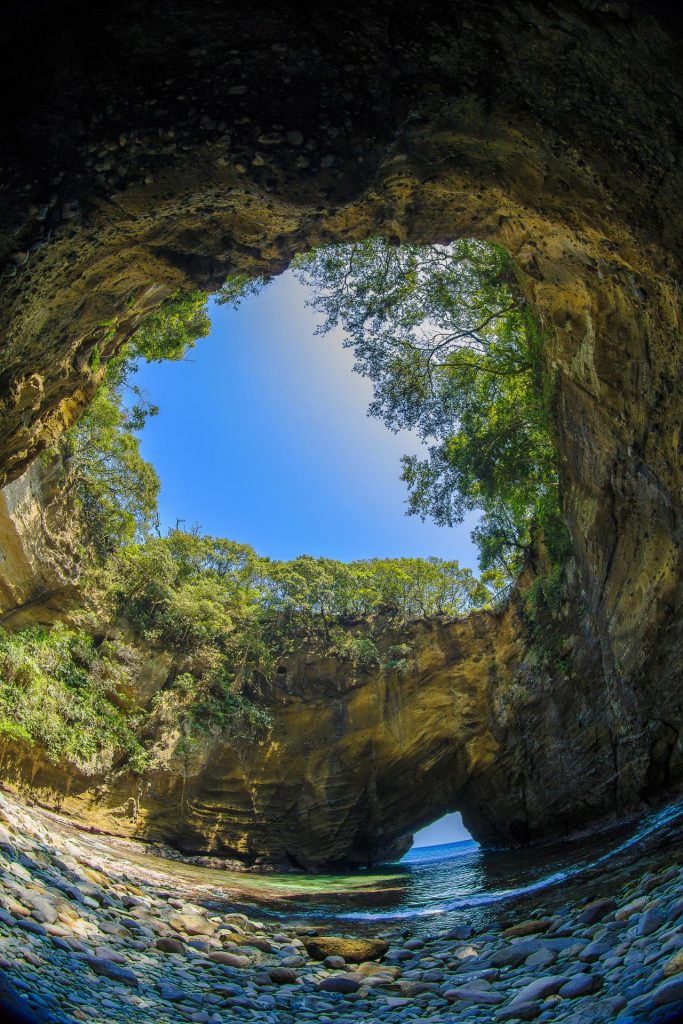
Drive further south to Toji and its scenic, rocky cliffs. You can view the famous Ryugu Sea Cave from above, where the weathered rocks have eroded the cave into a heart shape. You can also go inside the cave.
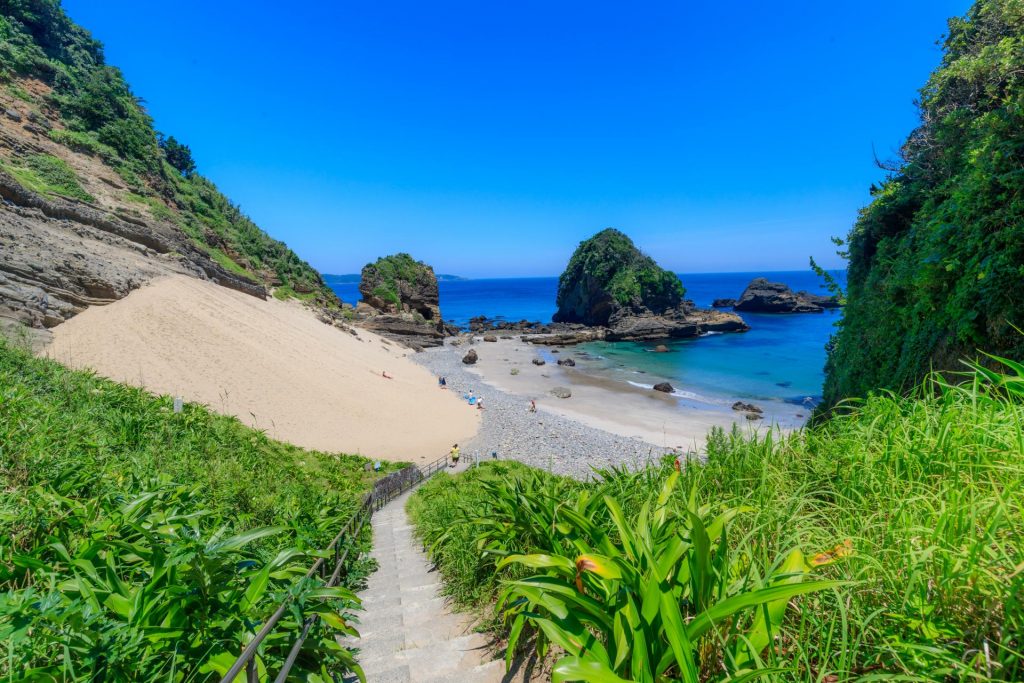
Right next door is the Toji Sand Skiing Field, a 70-meter dune where you can rent a sandboard. Beware of sand flying into your eyes and nose as it can be very hard to remove!
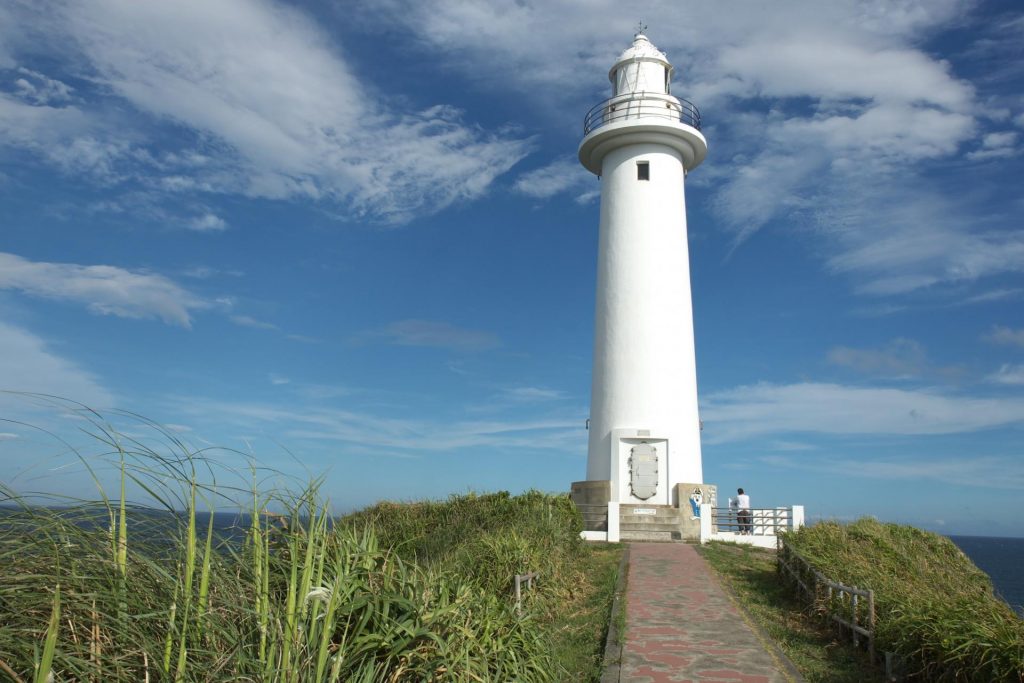
On sunny days, you can view the Izushichi-to—Izu’s seven outer islands—from Tsumekizaki Lighthouse located at the tip of the Suzaki Peninsula. The view gets even better in January when the grassy hills around the lighthouse are dotted with three million daffodils in full bloom. The Suzaki Walking Trail, which connects Tsumekizaki and Suzaki Bus Stop, is a 2.8-kilometer easy coastal walk.
Getting There
The best way to get to Shimoda is the train to Izukyu-Shimoda Station on the JR Ito Line. You can also travel in style on the JR Odoriko Limited Express Train direct from Tokyo, Shinagawa, Kawasaki and Yokohama stations. There are public buses to the beaches available, but it’s recommended to drive or cycle.
As Shimoda has long been a beach and hot spring resort, there are many types of accommodation here ranging from traditional ryokan and luxury inns to family-friendly B&Bs and beach cabins.
For more information, visit Explore Izu.
Related Stories
- Hiking and Cycling in Izu’s Adventure Capital
- Minami Izu Lobsters
- Riding Up and Around Izu Oshima
- Summer Fun at Izu and Lake Hamana
- Shizuoka Road Trip: The Mt. Fuji Loop
Blue Waves and Black Ships in Shimoda




